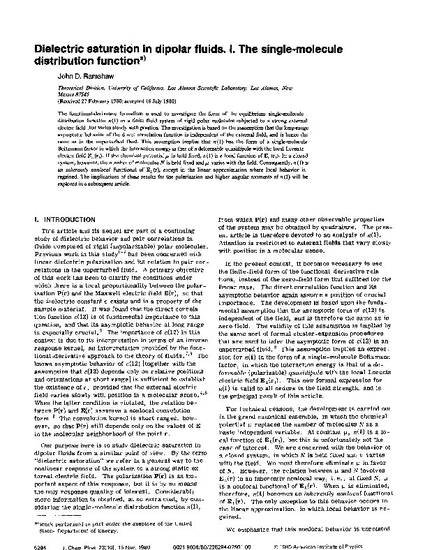
- Dielectrics,
- Thermodynamics,
- Correlation (Statistics)
The functional-derivative formalism is used to investigate the form of the equilibrium single-molecule distribution function n(1) in a finite fluid system of rigid polar molecules subjected to a strong external electric field that varies slowly with position. The investigation is based on the assumption that the long-range asymptotic behavior of the direct correlation function is independent of the external field, and is hence the same as in the unperturbed fluid. This assumption implies that n(1) has the form of a single-molecule Boltzmann factor in which the interaction energy is that of a deformable quasidipole with the local Lorentz electric field E/sub L/(r/sub 1/). If the chemical potential ..mu.. is held fixed, n(1) is a local function of E/sub L/(r/sub 1/). In a closed system, however, the number of molecules N is held fixed and ..mu.. varies with the field. Consequently, n(1) is an inherently nonlocal functional of E/sub L/(r), except in the linear approximation where local behavior is regained. The implications of these results for the polarization and higher angular moments of n(1) will be explored in a subsequent article.

Article appears in the Journal of Chemical Physics (http://jcp.aip.org/) and is copyrighted (1980) by the American Institute of Physics. This article may be downloaded for personal use only. Any other use requires prior permission of the author and the American Institute of Physics.
*At the time of publication John Ramshaw was affiliated with University of California, Los Alamos Scientific Laboratory